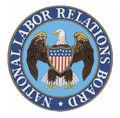 By Brad Williams
By Brad Williams
The National Labor Relations Board began 2014 on a sour note, conceding defeat on its controversial “Poster Rule” and facing skeptical Supreme Court justices in the blockbuster Noel Canning case testing the president’s power to appoint NLRB members under the Constitution’s so-called “Recess Appointments Clause.”
“Poster Rule” Challenge Dropped
On January 6, 2014, the NLRB announced that it would not appeal two federal circuit court decisions that had rejected the Board’s controversial “Poster Rule.” The rule, originally issued in 2011 under the NLRB’s long-neglected rulemaking power, required 6 million private employers to post a government-issued notice advising employees of their rights under the National Labor Relations Act. Business groups excoriated the rule as requiring posting of unbalanced information, and as violative of their free speech rights. Two federal circuit courts broadly agreed, holding that the Board lacked authority to issue the rule, and that its enforcement mechanisms were incompatible with the NLRA.
Although the Board obtained extensions of time in which to appeal these decisions to the Supreme Court, it announced on January 6th that it had “decided not to seek Supreme Court review.” The Board urged that the poster could still be displayed “voluntarily,” but effectively conceded defeat in the litigation. A similar rule issued by the Department of Labor in 2010, and applicable only to federal contractors, remains on the books. However, one of the parties behind the successful challenge to the NLRB’s “Poster Rule” recently filed a lawsuit challenging the DOL’s rule on similar grounds. The DOL has not yet responded in that litigation.
Skeptical Questioning in Noel Canning
On January 13, 2014, the NLRB faced skeptical Supreme Court justices in oral argument in the blockbuster Noel Canning case. The case arose from a Board order finding that an employer had violated the NLRA by refusing to sign a collective bargaining agreement after orally agreeing to the contract. The employer, Noel Canning, appealed the Board’s decision to a federal circuit court on the basis that three of the Board’s members had been improperly appointed by President Obama, and that the Board’s unfair labor practice decision was accordingly void.
The federal circuit court agreed, holding that the Board appointments had violated the Constitution’s so-called “Recess Appointments Clause.” That clause, which has never before been interpreted by the Supreme Court, provides that the president may “fill up all Vacancies that may happen during the Recess of the Senate.” President Obama had appointed the three Board members during a 2012 intra-session break in which the Senate had been convening every three days in pro forma sessions, but had been conducting no business. The federal circuit court held that the Recess Appointments Clause only permits presidential appointments between the Senate’s annual official “sessions,” and only for vacancies that have arisen during these inter-session breaks, not before. Because the federal circuit court found that the Board members’ appointments had been improper, it vacated the NLRB’s decision against Noel Canning.
On January 13th, the Supreme Court held oral argument in the case which implicates such technical questions as whether presidential recess appointments are only permitted during inter- (as opposed to intra-) session breaks; whether the vacancies must arise during Senate recesses, not before; and whether the Senate is in recess when it conducts pro forma sessions every three days. Practically, these questions address the political struggle between presidents and the Senate over appointments, and threaten to eliminate a workaround presidents have increasingly used to place officials in top positions where their appointments would otherwise be delayed or rejected by the Senate.
During the oral argument, the justices seemed broadly skeptical of the NLRB’s position that a robust recess appointment power is needed as a “safety valve” to deal with Senate intransigence; that the president (as opposed to the Senate) may decide when the Senate is actually in “recess;” and that a long history of presidential appointments seemingly at odds with the plain text of the Recess Appointments Clause justifies President Obama’s appointments in 2012. In particular, some justices seemed unpersuaded that there was an intelligible “limiting principle” that would permit a president to decide, on his own, whether the Senate was actually in “recess.” For instance, Justice Kennedy raised the prospect of “lunch break” appointments given the NLRB’s position.
A decision in the Noel Canning case is expected by this June. The Supreme Court might avoid some of the case’s stickier questions, including whether the legal acts of improperly appointed officials dating back to the Washington administration are somehow void, by deciding the case on the narrow question of whether recess appointments are proper when the Senate is convening every three days in pro forma sessions. Curtailment of the president’s recess appointment power will have limited short-term effects following the Senate’s elimination of the filibuster for most presidential appointments last November. That change made President Obama’s need for the power far less pressing because Democrats currently control the Senate. However, any curtailment of the power is likely to have significant longer-term effects, particularly when different parties once again control the Senate and the presidency.
Of course, should the recess appointment power be significantly curtailed come this June, future presidents may still always fall back on that old constitutional standby: “Advice and Consent of the Senate.”
Disclaimer: This article is designed to provide general information on pertinent legal topics. The statements made are provided for educational purposes only. They do not constitute legal advice and are not intended to create an attorney-client relationship between you and Holland & Hart LLP. If you have specific questions as to the application of the law to your activities, you should seek the advice of your legal counsel.
Click here to print/email/pdf this article.

